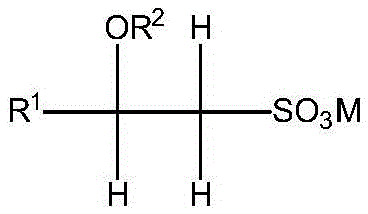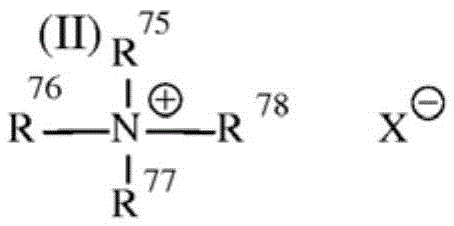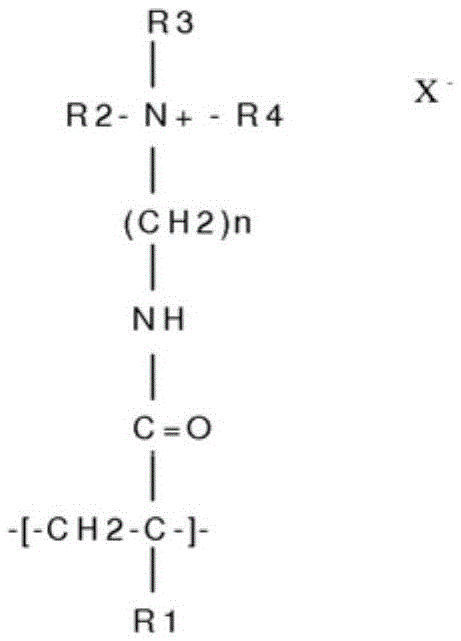Microcapsule-containing detergent or cleaning agent
A technology of microcapsules and builder, applied in the directions of detergent compounding agent, detergent material, detergent composition, etc., can solve problems such as inability to deliver sufficient amount, discoloration of consumer products, etc.
- Summary
- Abstract
- Description
- Claims
- Application Information
AI Technical Summary
Problems solved by technology
Method used
Image
Examples
example I1
[0403] Example I.1: Preparation of copolymers
[0404] a) AMPS Hydroxybutyl Acrylate
[0405] For the 1500 g formulation, 891 g deionized water was charged into the reactor along with 585 g AMPS (50% in water) and 7.5 g 4-hydroxybutyl acrylate (HBA) and placed under an inert gas atmosphere. The reaction mixture was heated to 75°C with stirring (400 rpm). When the reaction temperature was reached, 0.03 g of the water-soluble initiator sodium peroxodisulfate was dissolved in 15 g of water and injected into the reactor via a syringe.
[0406] A post-reaction of one hour was started after reaching the maximum temperature. The formulation was then cooled to room temperature and mixed with 1.5 g of preservative.
[0407]The aqueous solution is characterized by its viscosity, solids content and pH. The viscosity was 540 mPas (measured at 20 rpm Brookfield), the solids content was 21%, and the pH was 3.3. 3 g of copolymer was placed on a Petri dish and dried in a 160°C drying...
example I2
[0412] Example I.2: Resorcinol Capsules
[0413] In a 400 mL beaker, 5.5 g of resorcinol was dissolved in water under stirring (stirring rate: about 1,500 rpm), and then mixed with 2.0 g of sodium carbonate solution (20% by weight), at a pH of 7.9. The solution was heated to a temperature of about 52°C. Then 25.5 g of glutaraldehyde were added.
[0414] The mixture was further stirred for about 10 minutes (precondensation time) at a stirring rate of about 1,500 rpm and a temperature of about 52°C. Then about 20 g of water was added and after about 2 minutes 1 g of protective colloid (a) copolymer 1.1a, (b) copolymer 1.1b and (c) poly-AMPS (AMPS homopolymer), was added, And after about 2 more minutes had passed, 55 g of butyl phenylacetate (CAS No. 122-43-0; aromatic substance with a honey-like aroma) were added. Immediately thereafter, the stirring speed was increased to about 4000 rpm, and 20.0 g of sodium carbonate solution (20% by weight) were added in about the same t...
- example I3
[0420] - Example I.3: Resorcinol microcapsules comprising hydroxycitronellal;
PUM
| Property | Measurement | Unit |
|---|---|---|
| melting point | aaaaa | aaaaa |
| particle size | aaaaa | aaaaa |
| particle size | aaaaa | aaaaa |
Abstract
Description
Claims
Application Information
 Login to View More
Login to View More - R&D
- Intellectual Property
- Life Sciences
- Materials
- Tech Scout
- Unparalleled Data Quality
- Higher Quality Content
- 60% Fewer Hallucinations
Browse by: Latest US Patents, China's latest patents, Technical Efficacy Thesaurus, Application Domain, Technology Topic, Popular Technical Reports.
© 2025 PatSnap. All rights reserved.Legal|Privacy policy|Modern Slavery Act Transparency Statement|Sitemap|About US| Contact US: help@patsnap.com



